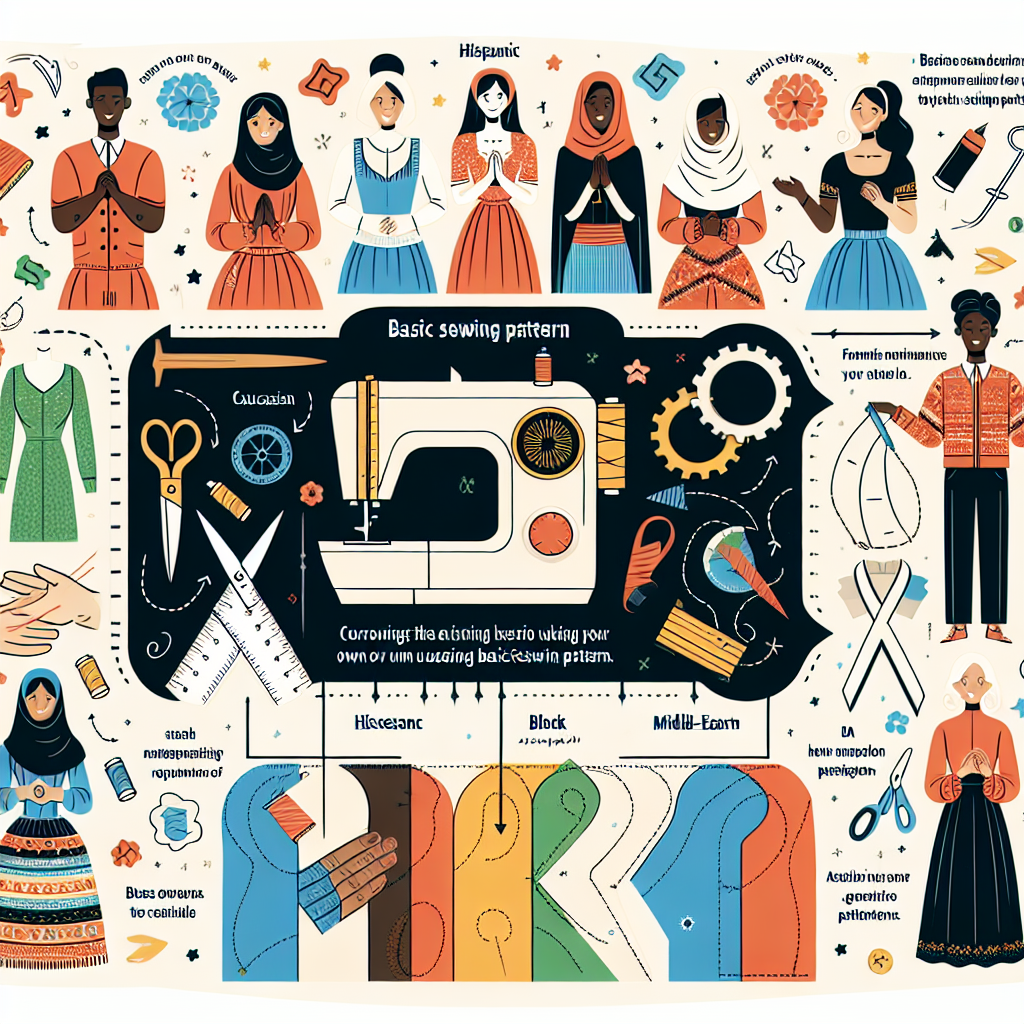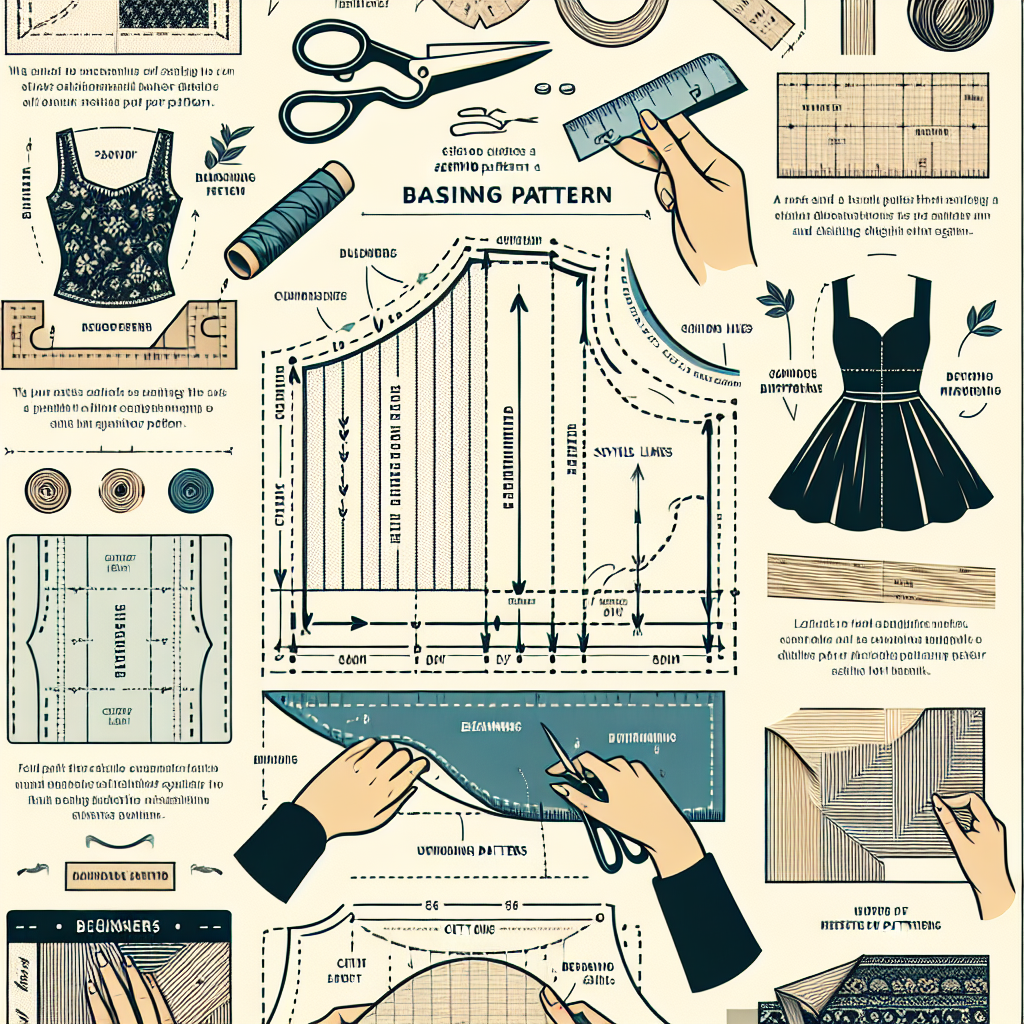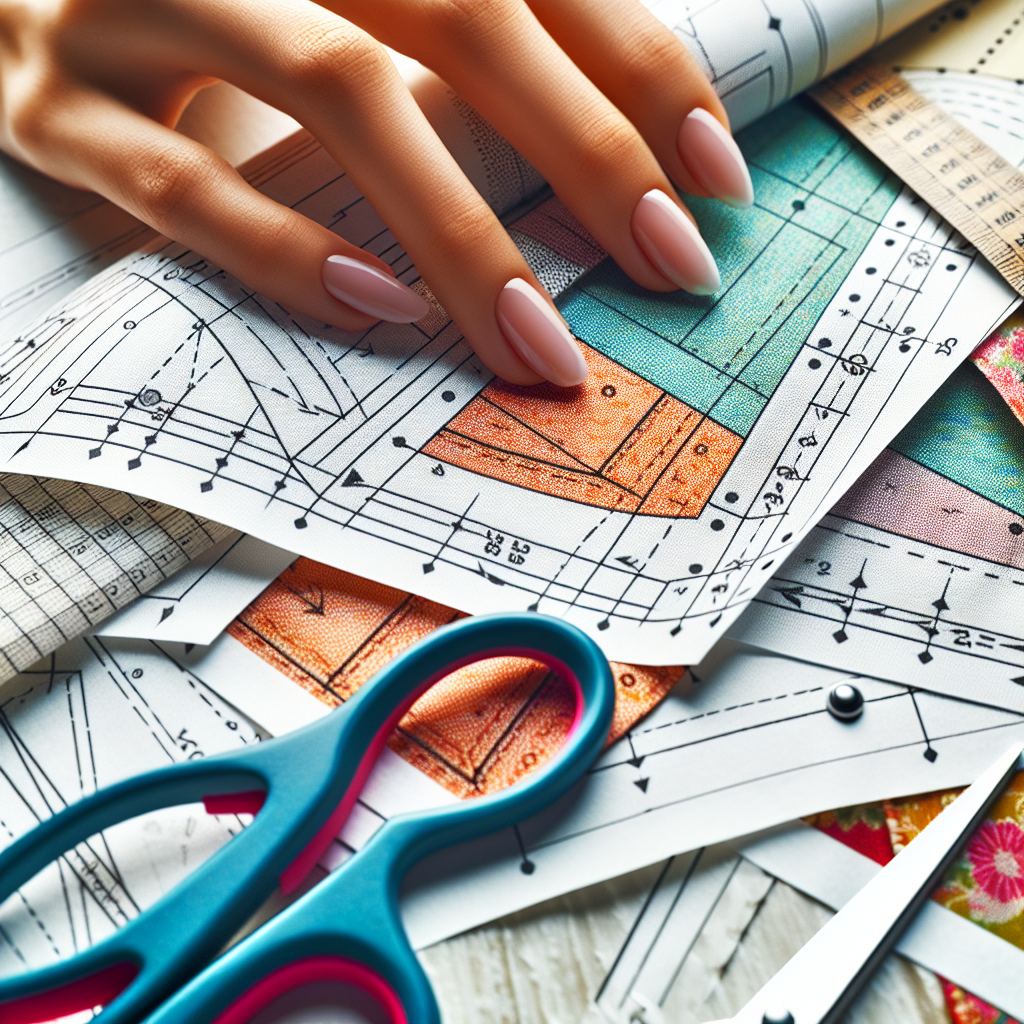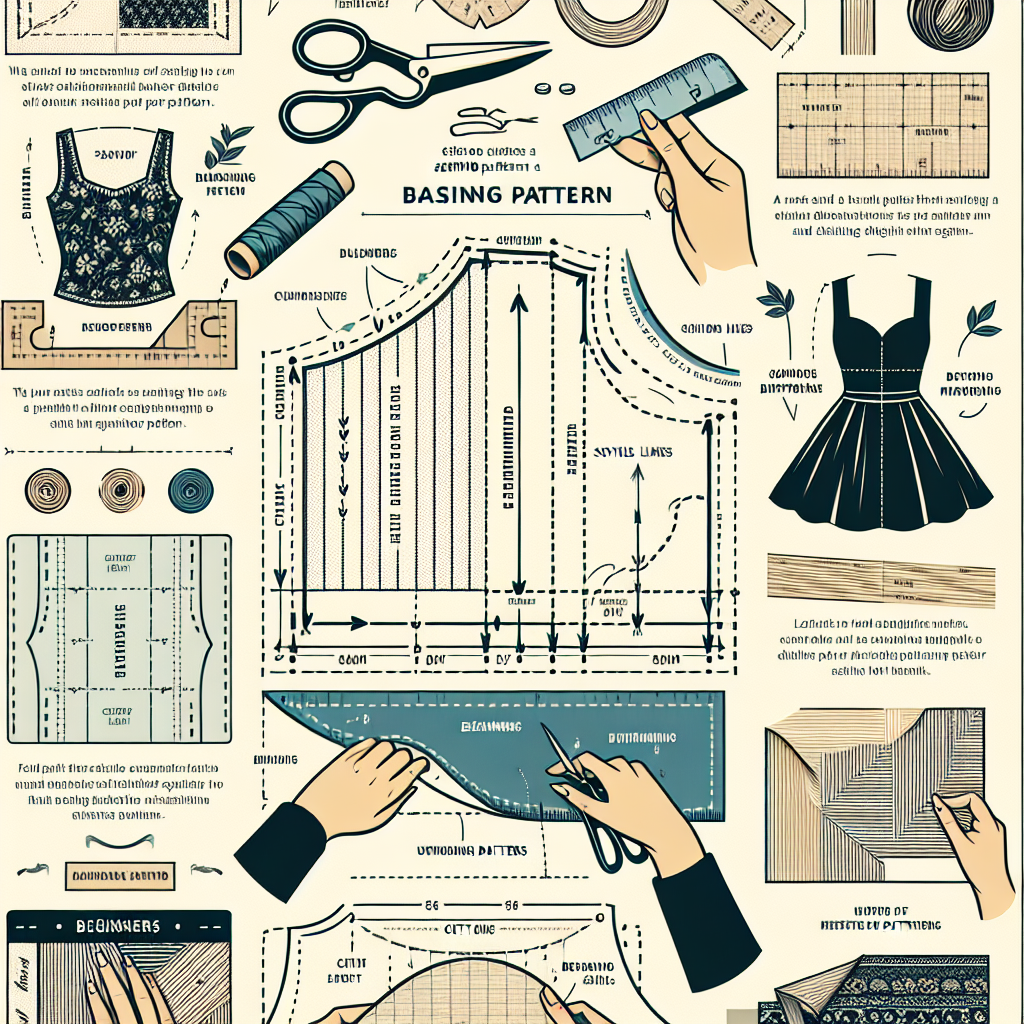Are you interested in learning how to sew or looking to expand your sewing skills? If so, understanding the basics of a sewing pattern is essential. A basic sewing pattern serves as the blueprint for creating a garment and guides you through each step of the process. Whether you’re a beginner or an experienced sewist, this article will provide an overview of what a basic sewing pattern is and why it is a valuable tool for any sewing project. Let’s dive in and explore the world of sewing patterns!
What is a basic sewing pattern?
A basic sewing pattern is a template or guide that helps you create garments and other fabric items. It is a blueprint for construction and allows you to have consistent and accurate results in your sewing projects. Whether you are a beginner or an experienced sewer, a basic sewing pattern is an essential tool that can save you time and help you achieve professional-looking results.

Definition of a basic sewing pattern
A basic sewing pattern consists of a set of instructions and pattern pieces that are used to create a specific garment or fabric item. The instructions provide step-by-step guidance on how to cut and sew the fabric pieces together to make a finished product. The pattern pieces are printed on durable paper or cardboard and are used as templates to trace and cut the fabric according to the desired size and style.
Components of a basic sewing pattern
A basic sewing pattern typically includes several key components. First, there is the instruction sheet, which outlines the steps to follow and may also provide tips and suggestions for successful sewing. Next, there are the pattern pieces, which are usually organized by size and indicated by numbered or lettered lines that correspond to specific measurements or markings. Additionally, there may be a cutting layout guide, which shows how to arrange the pattern pieces on the fabric to minimize waste and ensure efficient use of materials.

Importance of using a basic sewing pattern
Using a basic sewing pattern offers several benefits. First and foremost, it provides a framework for sewing projects, enabling you to follow a structured process and achieve accurate and consistent results. It eliminates the guesswork and allows you to focus on executing the sewing techniques rather than figuring out the construction details. Moreover, sewing patterns are designed by professionals who have the expertise to create well-fitting and stylish garments, ensuring that your finished product looks polished and professional.
How to choose a basic sewing pattern
When choosing a basic sewing pattern, it is important to consider your skill level, body measurements, and the type of garment or item you wish to make. Patterns often indicate the level of difficulty, ranging from beginner-friendly to advanced. Beginners should start with simple patterns that have fewer components and basic construction techniques. Additionally, pay attention to the size range offered by the pattern, as it should match or be easily adjustable to your body measurements. Lastly, consider the style and design of the pattern to ensure it aligns with your preferences and the purpose of your project.

Understanding pattern markings
Pattern markings are symbols, lines, or dots that are printed on the pattern pieces to indicate important reference points and construction details. These markings guide you in aligning and joining fabric pieces accurately. Common pattern markings include notches, which are small diamond-shaped indicators used to match corresponding fabric edges, and grainline arrows, which show the direction in which the pattern should be placed on the fabric for optimal drape and fit. It is crucial to familiarize yourself with these markings and refer to the pattern instructions to interpret and use them correctly.
Different types of basic sewing patterns
There are various types of basic sewing patterns available, catering to different styles, sizes, and purposes. Some common types include dress patterns, pants patterns, skirt patterns, and shirt patterns. Each type of pattern is specifically designed to create a particular garment style and typically includes multiple variations and options for customization. Additionally, there are patterns for accessories such as bags, hats, and aprons, as well as patterns for home décor items like curtains and cushion covers. The wide range of options allows sewers to explore their creativity and tailor their projects to suit their personal taste and needs.

Altering a basic sewing pattern
While sewing patterns come in various sizes, it is common for individuals to require some degree of alteration to achieve a perfect fit. Factors such as body shape, height, and personal preferences can result in deviations from the standard sizing. Luckily, most patterns include instructions on how to make basic alterations, such as adjusting the length or width of a garment. Advanced sewers may even be able to modify patterns to achieve more complex alterations, such as changing the neckline or adding pleats. It is important to take accurate body measurements and to refer to the pattern’s alteration instructions or seek guidance from sewing resources or professionals for more complex alterations.
Using a basic sewing pattern with different fabrics
One of the advantages of using a basic sewing pattern is its versatility in accommodating different types of fabric. Patterns typically provide recommendations for suitable fabrics, taking into account factors such as drape, weight, and stretch. However, it is possible to use a basic sewing pattern with various fabric choices by making some adjustments. For instance, if the pattern is designed for woven fabric but you prefer to use a knit fabric, you can adjust the seam allowances and potentially modify the pattern to accommodate the stretch. It is important to consider the properties of your chosen fabric and to make any necessary modifications to ensure a successful outcome.
Resources for finding basic sewing patterns
There are several resources available for finding basic sewing patterns. Local fabric stores often carry a selection of printed patterns from commercial pattern companies, which offer a wide range of styles and sizes. Online stores and websites also provide extensive options for purchasing and downloading digital sewing patterns. These patterns can be printed at home or at a local print shop, providing convenience and instant access. Additionally, there are independent pattern designers and sewing communities that offer unique and specialized patterns. Exploring these resources allows you to discover different designers and patterns that suit your sewing needs and preferences.
Tips for successful sewing with a basic sewing pattern
To ensure success when using a basic sewing pattern, consider the following tips:
-
Read the instructions thoroughly before beginning your project. Familiarize yourself with the steps, techniques, and any special considerations or tips provided.
-
Take accurate body measurements and choose the appropriate size based on the pattern’s sizing chart. Remember that patterns are often designed with ease, so be prepared to make adjustments for a personalized fit.
-
Make a mock-up or muslin before cutting into your final fabric. This practice run allows you to test the fit and make any necessary alterations without wasting expensive or precious fabric.
-
Invest in quality tools and sewing supplies. A sharp pair of fabric scissors, reliable sewing machine, and appropriate needles can make a significant difference in your sewing experience and the outcome of your project.
-
Practice good sewing techniques, such as pinning and pressing accurately, securing seams, and finishing edges. These details contribute to the overall quality and longevity of your finished garment.
By following these tips and utilizing the guidance provided by a basic sewing pattern, you can confidently embark on your sewing projects and enjoy the process of creating beautiful, customized garments and fabric items.
In conclusion, a basic sewing pattern is an invaluable tool for sewers of all skill levels. It provides structure, guidance, and the opportunity for creativity. With the understanding of its components, the ability to choose the right pattern, and the knowledge of alterations and fabric choices, you can confidently embark on various sewing projects and bring your creative vision to life. So, grab your favorite fabric, thread your sewing machine, and let the adventure begin! Happy sewing!

